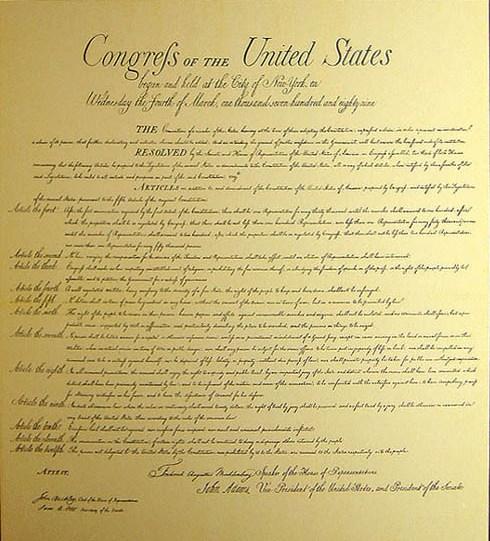Description of the Example
The completed digital field trip was quite informative and meaningful. The primary document selected from the Founding Documents Gallery at the National Archives was the Bill of Rights. This document outlines the major restrictive clauses or amendments to the Constitution that were aimed at protecting the rights and liberties of every American citizen (Ghodsi & Hojjatoleslami, 2012).

Specifically, the Bill of Rights refers to the first ten constitutional amendments that were proposed to delegate specific rights and powers to every person (Miller, 2015).
Origins and Context of the Document
After exploring and analyzing the presented information, it is remarkable that the Bill of Rights emerged as a promise to different citizens before ratifying the Constitution. Its framers wanted to establish a sovereign nation that respected and honored people’s liberties. Without such liberties, most of the Anti-Federalists in the country were against the Constitution. The amendments proposed in the document would limit the powers of the federal government and outline specific guarantees of rights or personal freedoms (Miller, 2015). The presentation of the Bill of Rights can, therefore, be described as an ingenious move that made it possible for the American States to ratify the Constitution. According to its framers, the absence of the document would create a suppressive government capable of curtailing the rights of the nation’s citizens.
Using Class Reading to Analyze the Work
A proper understanding of history can help people understand the gains and losses recorded in terms of politics or democracy. Our class readings have outlined why issues such as diversity and respect for life are critical in every society. The government uses its resources to provide services and promote a number of welfare programs that benefit its people directly or indirectly. With his kind of knowledge, it is quite clear that the question of human rights is something that has been analyzed critically for many decades. A government that suppresses the rights of its people makes it impossible for them to realize their potential (Miller, 2015). Sovereign power, according to many democrats, should be bestowed upon the citizens of a given nation. This understanding explains why the ten amendments establishing the Bill of Rights were critical towards the ratification of the American Constitution.
Contemporary Issues in Government
It is without a doubt that the Bill of Rights has remained a powerful document that continues to influence a wide range of contemporary issues and cultural subjects in the country. The document has been used to interpret a wide range of subjects that affect the lives of many people. For instance, issues such as the legalization of marijuana for medical use, gay rights, civil liberties, slavery, child labor, and witness protection have all borrowed a lot from the Bill of Rights (Ghodsi & Hojjatoleslami, 2012). Many professionals and legal minds have been using the document to expand the liberties of underprivileged persons in the country. Additionally, the provision of culturally competent health services has emerged as a new contemporary pattern informed by the concepts laid down by the framers of the document. From this analysis, it is quite clear that the document will continue to influence a wide range of contemporary cultural patterns in the nation.
References
Ghodsi, Z., & Hojjatoleslami, S. (2012). Knowledge of students about patient rights and its relationship with some factors in Iran. Procedia – Social and Behavioral Sciences, 31(1), 345-348. Web.
Miller, R. (2015). American Indian Constitutions and their influence on the United States Constitution. Proceedings of the American Philosophical Society, 159(1), 32-56. Web.